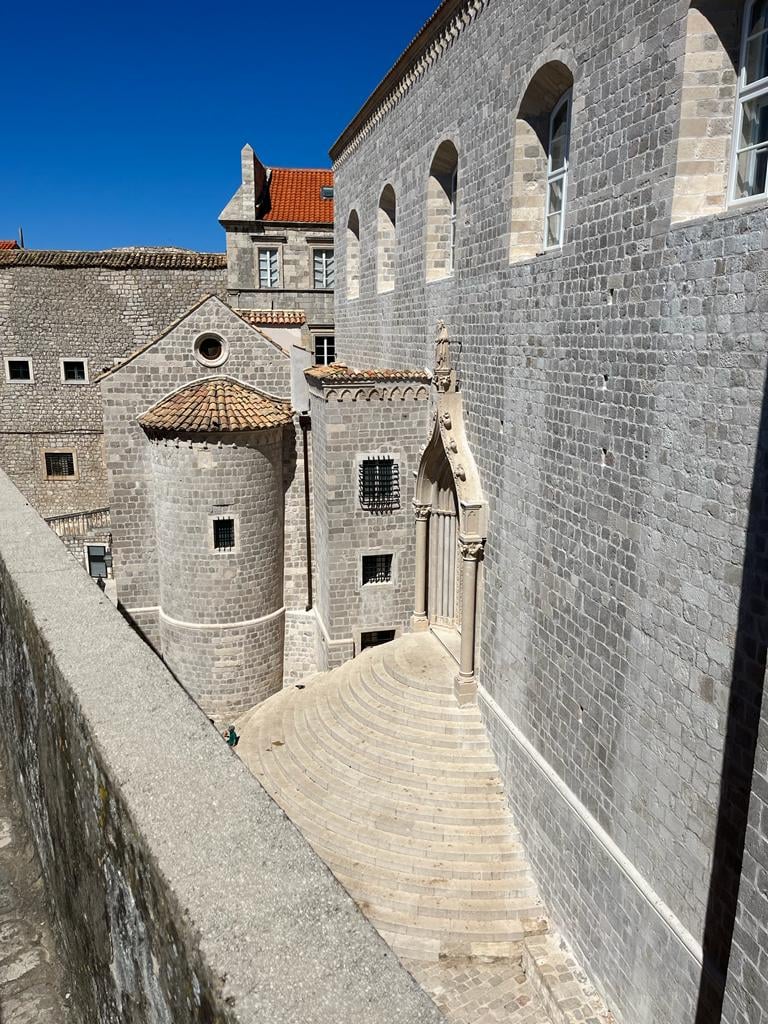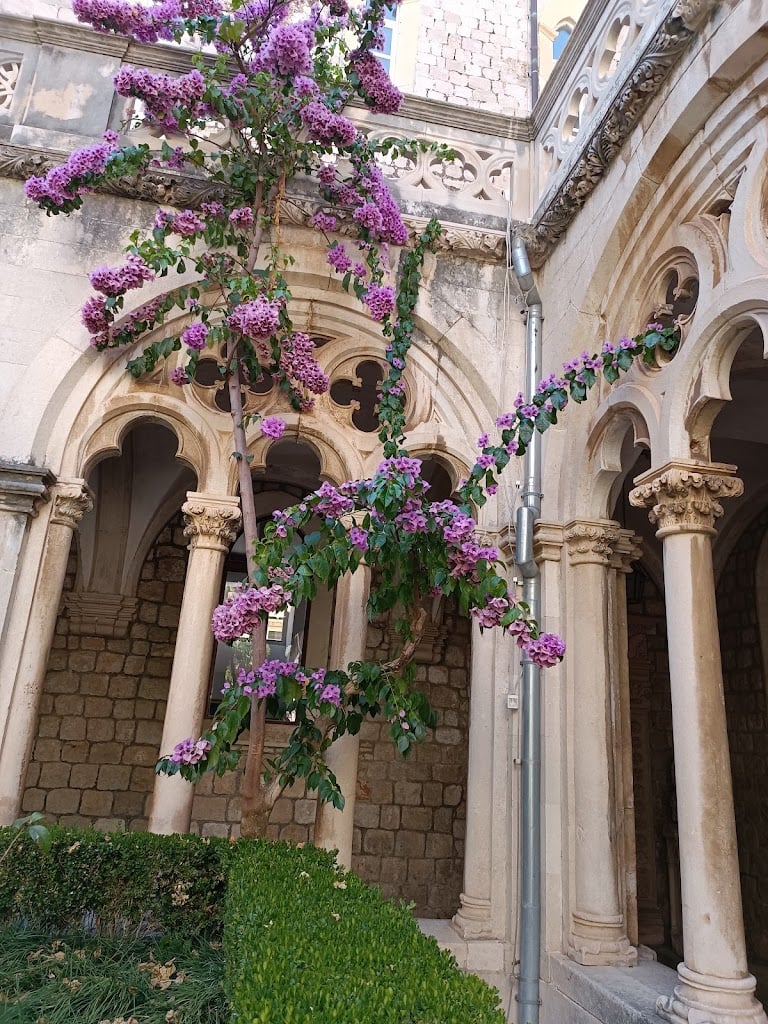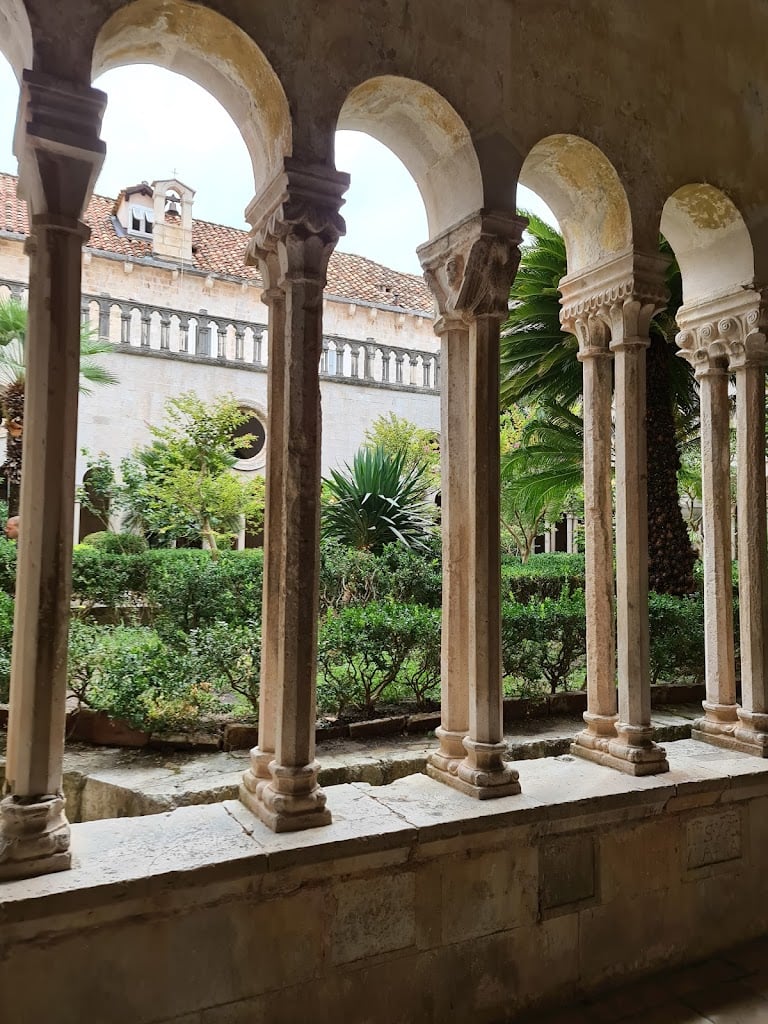Dominikanski samostan





Ask ThatchGPT
Suggest a local expert to plan my trip
Suggest an unique itinerary for my Dubrovnik trip
What foods do Dubrovnik locals eat
What are some true hidden gems in Dubrovnik
Help me brainstorm trip ideas for Dubrovnik
Help me plan a family-friendly trip to Dubrovnik
What people say
Pedro Pereira
Available for hire
"The Dominican Monastery, located in the eastern part of Dubrovnik near the inner Ploče Gate, is a significant architectural and cultural landmark. Established in 1225, the monastery complex, which includes the Church of St. Dominic, was not fully completed until the 14th century. Strategically positioned within the city walls, the monastery became an integral part of Dubrovnik's defensive system.
The Church of St. Dominic features a simple yet striking Gothic architectural design, characterized by its hall-like structure and a pentagonal Gothic apse. The high outer walls are unadorned, with a portal showcasing a mix of Romanesque and Gothic styles, modified by Bonino of Milan in 1419.
One of the most notable artworks within the church is the large golden Crucifix created by Paolo Veneziano in the 14th century. This work not only depicts Christ but also features the four Evangelists in the corners, accompanied by mourning figures of Mary and St. Joseph, illustrating a distinctive Byzantine-Gothic style.
The monastery complex took its final form in the 15th century, marked by the construction of the vestry, the capital hall, and the cloister. The cloister, built between 1456 and 1483 by local builders under the design of Florentine architect Massa di Bartolomeo, is a beautiful space characterized by Gothic and Renaissance triforiums and a central well crown. This green oasis provides a refreshing escape from the summer heat.
The Capital Hall, designed by architect Božitko Bogdanović, served as a meeting place for the monastic community. It features Gothic doors and a pavement with gravestones from the 15th and 16th centuries, including notable figures like poets Dinko Ranjina and Junije Palmotić.
In addition to its architectural significance, the Dominican Monastery houses a museum that exhibits a rich collection of paintings, artifacts, and jewelry from Dubrovnik's history. Highlights include works by renowned Dubrovnik artists such as Nikola Božidarević and Mihajlo Hamzić. The monastery's library, boasting over 220 incunabula and numerous illuminated manuscripts, further underscores its cultural importance.
The Dominican Monastery stands as a testament to Dubrovnik's rich history, architectural beauty, and artistic heritage, making it a must-visit site for anyone exploring the city."
Read more in:
Emily Laura
"The circular steps outside of the Monastery serve as the location the Sparrow's used to deliver their anti-Lannister speech when they first arrived in King's Landing.
To get to these steps you want to follow the main street around until you pass the entrance to the Harbour. Keep going around that corner, towards Ploce Gate, and they will be on your left.
Cost:
- To see the steps is free
- To enter the Monastery it is 3 Euro"
Read more in:
Hannah Hertog
"One of my favorite spots to take some unique pictures. "
Mentioned in these guides
About Dominikanski samostan
Get the inside scoop on Dominikanski samostan from local experts, travel creators, and tastemakers. Browse genuine trip notes, Dominikanski samostan reviews, photos, travel guides, and itineraries from real travelers and plan your trip with confidence.
Phone
Save this spot for later or start mapping out a new trip today
Try our AI Travel Assistant and get instant answers to any questions about your trip.
Ask ThatchGPT


